If you know that your data is a sine curve, (which can be represented as a number of complex exponentials) then you can use Pisarkenko's harmonic decomposition; http://en.wikipedia.org/wiki/Pisarenko_harmonic_decomposition
However, if you have access to more data points, my approach would still to use an DFT.
UPDATE:
I used Pisarenko's harmonic decomposition (PHD) on your data, and even though your signals are extremely short (only 86 datapoints each), the PHD algorithm definately has potential if there is more data available. Included below are two (column 11 & 13 of your data) out of the 24 signals, depicted in blue, and the sine curve in red corresponds to the estimated amplitude/frequency values from PHD. (note that phase shift is unknown)


I used MATLAB (pisar.m) to perform PHD: http://www.mathworks.com/matlabcentral/fileexchange/74
% assume data is one single sine curve (in noise)
SIN_NUM = 1;
for DATA_COLUMN = 1:24
% obtain amplitude (A), and frequency (f = w/2*pi) estimate
[A f]=pisar(data(:,DATA_COLUMN),SIN_NUM);
% recreated signal from A, f estimate
t = 0:length(data(:,DATA_COLUMN))-1;
y = A*cos(2*pi*f*t);
% plot original/recreated signal
figure; plot(data(:,DATA_COLUMN)); hold on; plot(y,'r')
title({'data column ',num2str(DATA_COLUMN)});
disp(A)
disp(f)
end
Which resulted in
1.9727 % amp. for column 11
0.1323 % freq. for column 11
2.3231 % amp. for column 13
0.1641 % freq. for column 13
VERIFICATION OF PHD:
I also did another test where I knew the values of amplitude and frequency and then added noise to see if PHD can estimate the values properly from the noisy signal. The signal consisted of two added sine curves with frequencies 50 Hz, 120 Hz respectively, and amplitudes 0.7, 1.0 respectively. In the figure below, the curve in red is the original, and the blue is with added noise. (figure is cropped)

Fs = 1000; % Sampling frequency
T = 1/Fs; % Sample time
L = 1000; % Length of signal
t = (0:L-1)*T; % Time vector
% Sum of a 50 Hz sinusoid and a 120 Hz sinusoid
x = 0.7*sin(2*pi*50*t) + sin(2*pi*120*t);
y = x + 0.4*randn(size(t)); % Sinusoids plus noise
figure;
plot(Fs*t(1:100),y(1:100)); hold on; plot(Fs*t(1:100),x(1:100),'r')
title('Signal Corrupted with Zero-Mean Random Noise (Blue), Original (Red)')
[A, f] = pisar(y',2);
disp(A)
disp(f/Fs)
PHD estimated the amp/freq values to be:
0.7493 % amp wave 1 (actual 0.7)
0.9257 % amp wave 2 (actual 1.0)
58.5 % freq wave 1 (actual 50)
123.8 % freq wave 2 (actual 120)
Not bad for quite a bit of noise, and only knowing the number of waves the signal consists of.
REPLY @Alex:
Yeah it's a nice algorithm, I came across it during my DSP studies, and I thought it worked quite well, but it's important to note that Pisarenko's Harm.Dec. models any signal as N > 0 sinusoids, N being specified from start, and it uses that value to ignore noise. Thus, by definition, it is ONLY useful when you know roughly how man sinusoids your data is comprised of. If you have no clue of the value for N and you need to run the algorithm for a thousand different values, then a different approach is definately recommended. That said, evaluation is thereafter straightforward since it returns N amplitude and frequency values.
Multiple signal classification (MUSIC), is another algorithm which continues where Pisarenko left off. http://en.wikipedia.org/wiki/Multiple_signal_classification




